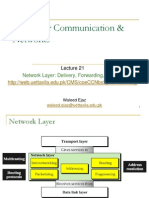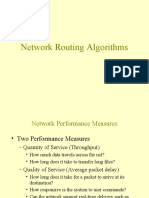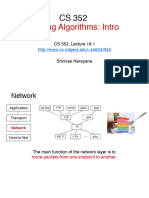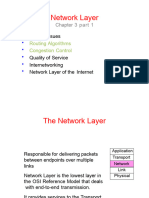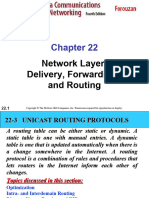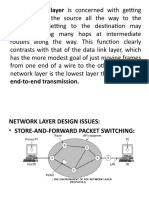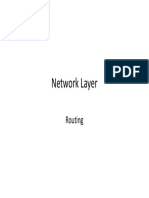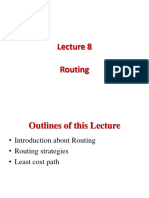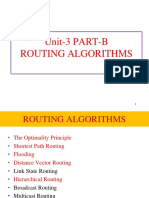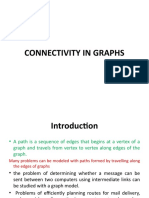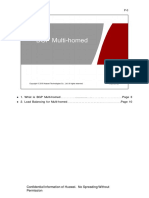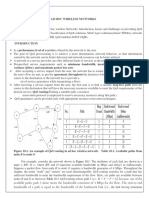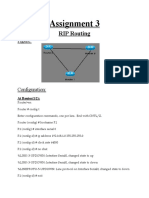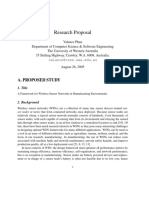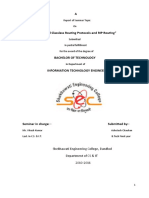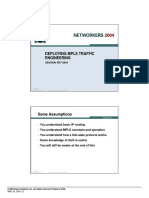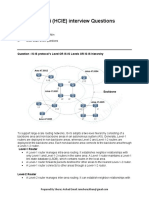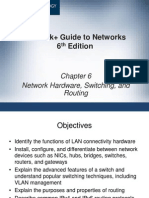0% found this document useful (0 votes)
21 views15 pagesL14-Routing Principles, Link State Routing
The document discusses routing principles in computer networks, focusing on determining the 'best' paths for data packets through a network of routers. It explains the graph abstraction of networks, algorithm classifications (global, decentralized, static, and dynamic routing), and details the link-state routing method, particularly Dijkstra's algorithm for finding the least-cost paths. The document includes examples to illustrate the application of these concepts in routing.
Uploaded by
atorzsasCopyright
© © All Rights Reserved
We take content rights seriously. If you suspect this is your content, claim it here.
Available Formats
Download as PDF, TXT or read online on Scribd
0% found this document useful (0 votes)
21 views15 pagesL14-Routing Principles, Link State Routing
The document discusses routing principles in computer networks, focusing on determining the 'best' paths for data packets through a network of routers. It explains the graph abstraction of networks, algorithm classifications (global, decentralized, static, and dynamic routing), and details the link-state routing method, particularly Dijkstra's algorithm for finding the least-cost paths. The document includes examples to illustrate the application of these concepts in routing.
Uploaded by
atorzsasCopyright
© © All Rights Reserved
We take content rights seriously. If you suspect this is your content, claim it here.
Available Formats
Download as PDF, TXT or read online on Scribd
/ 15




